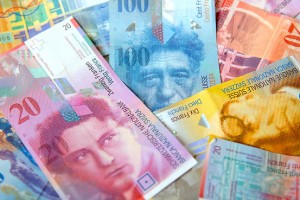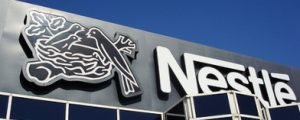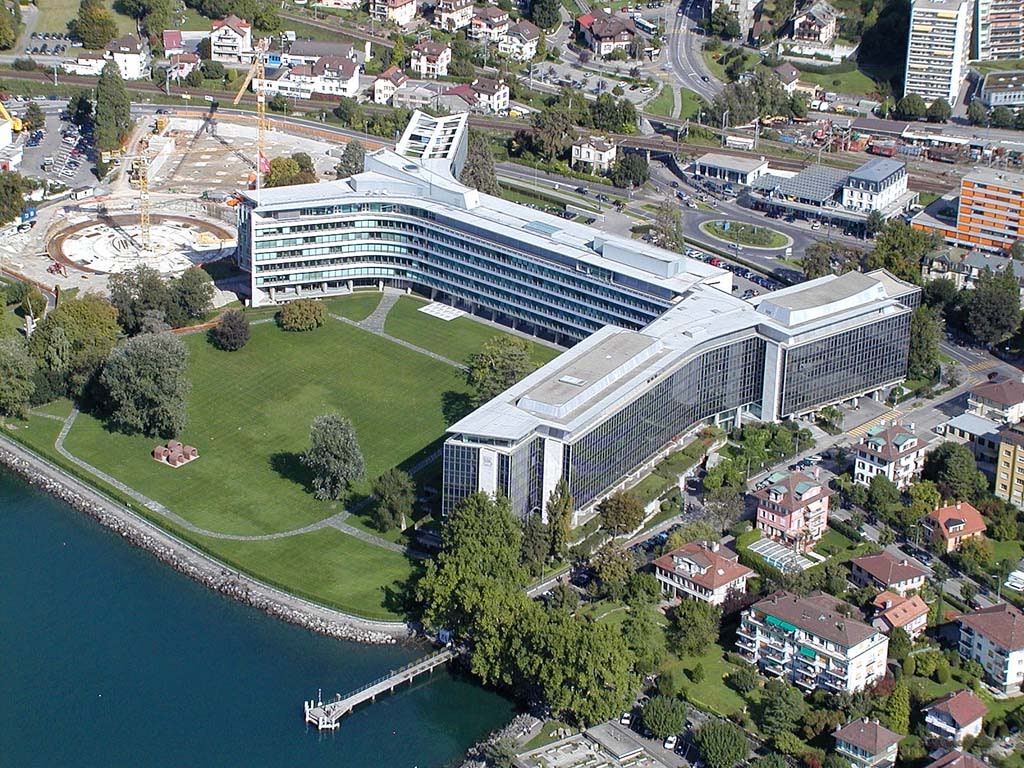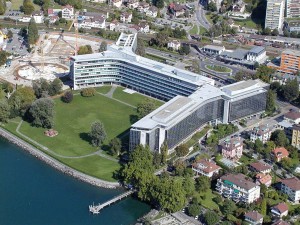Personally, my household owns shares of Nestlé SA, the Swiss-based chocolate, water, coffee, condensed milk, packaged food, and nutrition giant. I’ve never been able to get as much of it as I want due to valuation1, but whenever the stock is within striking distance of my conservatively estimated calculation of intrinsic value, I write a check to purchase more shares, which are then added to the “permanent” holdings. That means, short of extraordinary circumstances, I have no intention of ever selling our Nestlé stock because it is one of only ten or so companies that I treat exactly as I do our family businesses. Each year, our ownership grows as I nibble around the edges, waiting for a better opportunity. One of these days, God and Mr. Market willing, I will get a chance to purchase enormous quantities of the stock at a price that is highly favorable. My job is to be ready for that moment.

There is something wonderful about knowing that every December 31st, there is a check from Switzerland that will be deposited in your account for your share of the earnings on everything from hot cocoa and espresso to bottled water and chocolate. If you opt for the ADR program, your dividend will be automatically converted back into United States dollars for you. Otherwise, you will receive Swiss Francs.
I feel so strongly about the long-term quality of the Nestlé holdings, that I imagine, someday, my Nestlé shares will be gifted to my children and grandchildren, probably in a trust fund that allows them to collect the cash dividends but not sell the stock itself. Besides that, I love the products including both the Nescafe coffee and the Nespresso Espresso system.
Why? Nestlé has thirty (30) individual brands that generate more than $1 billion in sales each. It is a massive, stable collection of slow-to-moderate-growing businesses that churn out incomprensible gushers of cash both through organic growth and price increases, which management then returns to the owners in the form of dividends and stock buybacks. The result is a firm that grows more valuable year after year, while no one seems to notice. Like a Swiss clock, the food and beverage company executes extraordinarily well, sticks to what it knows, and makes money.
Nestlé is not inexpensive right now. It’s overvalued, not to the degree you see at one of my other favorite companies, Brown-Forman, but enough to matter. The shares trade at 60.40 CHF and generate profits of 3.10 CHF, of which 1.95 CHF is distributed as a cash dividend to the owners. I’d be all over it at 40.00 CHF or less.
[mainbodyad]The stock trades on the Swiss Exchange in Zurich, Switzerland, although there is an ADR program managed by CitiBank for investors in the United States. There are advantages and disadvantages to using the ADR, one of which involves having the tax work done for you already, the other of which is the possibility of the ADRs trading at above or below the corresponding value of the stock it holds depending on the supply / demand situation at the time. Right now, for example, the ADRs are roughly 8¢ cheaper per share than they should be.
I thought it would be fun to go back and look at the most recent history of Nestlé for shareholders who bought and held the stock back in the early 1990’s. There is information further back but it gets harder to calculate so, again, the long-term record is somewhat arbitrary. Besides, even if we were to go back further, the results would be even more impressive.
A $100,000 Investment In Nestlé Shares in 1991 Without Dividends Reinvested
If you bought $100,000 worth of Nestlé common stock on the first day of trading in 1991, you would, as of October 7th, 2012, own 14,306 shares. At 60.40 CHF per share, this is a market value of 864,082.40 CHF. Translated back into United States dollars, that is $929,718.

A $100,000 investment in Nestlé without dividends reinvested would now be worth roughly $1,208,558, of which $929,718 would be in shares of stock and $278,840 would be in cash dividend checks mailed to you over the years. If you reinvested the dividends, you would have $1,480,662, which is nearly an extra $300,000 in wealth.
On top of the $929,718 in stock you own, you would have collected years of cash dividends. How much? It’s hard to say given the currency translation, but if you had let the money pile up in Swiss Francs, over the years, you would have received checks for 229,754.36 CHF and you are about to receive another dividend check for an estimated 29,400 CHF or so this coming December 31st (depending on whether management sticks to last year’s 5.4% increase), for a total of 259,154.36 CHF. In current United States dollars, that is $278,839.73.
That means that you turned your $100,000 investment into $1,208,558 consisting of $929,718 in market value shares of Nestlé SA and $278,840 in cash dividends received over the years, which you could have spent, given to charity, or used to fund other investments. That works out to a compound annual growth rate of north of 12%. There would be tax considerations, which are too complicated to factor into the equation depending on your home country, the account in which you held the shares, et cetera, but all in all, you increased your purchasing power nicely from a single decision 21+ years ago without ever thinking about it again.
A $100,000 Investment In Nestlé Shares in 1991 With Dividends Reinvested
What if you had plowed those Nestlé dividends back into the company to increase your shares? You would now be sitting on roughly 22,784 shares of the stock, with a market value of 1,376,131 CHF, or $1,480,662. Your annual dividend income will probably be something like 46,828 CHF this year, or $50,385. That works out to a compound annual growth rate of roughly 12.80%. Again, your actual results could have varied significantly depending on how you handled the tax complications of owning a foreign company.
[mainbodyad]That is freedom. A check written for $100,000 back in 1991 is now pumping out $50,000+ in cash dividends per year assuming optimal tax strategy. Do you know what kind of good that cash could do for the typical American family? You’d never have to worry about paying for prescription medicines. You could buy a new car every few years by writing a check. You could take your loved ones on vacations around the world. You could fund a local food pantry that made sure no child in your community went hungry. The choices are limitless, bound only by your imagination and values.
Now, imagine if you had made an investment like that every year, planting a new seed, in a new business, leaving a long line of financial trees in your wake for you, your children, and your grandchildren to harvest in future years.
When You Find a Great Business, Watch It
There are very few businesses in the world that can earn those kinds of returns on capital without a lot of effort on the part of the investor. When you own a company like Nestlé, you are letting the business, and time, do the work. You don’t have to be clever. You don’t have to be smart. You don’t have to work hard. You just have to make sure your initial purchase price is rational, that the business is still earning good returns on capital despite the inevitable fluctuations that will happen from year to year, and then write a check, waiting several decades as you go on with the more important things in life, like taking your kids to baseball games or writing the great American novel you’ve always wanted to pen.
Companies like this won’t solve a red ring problem for those of you who want to be driving a Bentley at 25, but they can be nice augments to your primary wealth building assets. For me, they are a way to inventory profits from my more lucrative private holdings, and provide an insurance backup that is silently growing in the shadows. Had I never mentioned it on this blog, no one would have ever known. These are the bread and butter (er … milk and chocolate) enterprises that lead to seven, eight, and in some rare cases, nine-figure portfolios, like the retired dairy farmer I wrote about last year.
Footnotes: 1 Thus far in fiscal 2012, I’ve only been able to pick up a few thousand dollars (in United States currency) worth of new Nestlé SA shares to add to the collection because the stock keeps climbing higher. There are better bargains elsewhere at current valuations.




